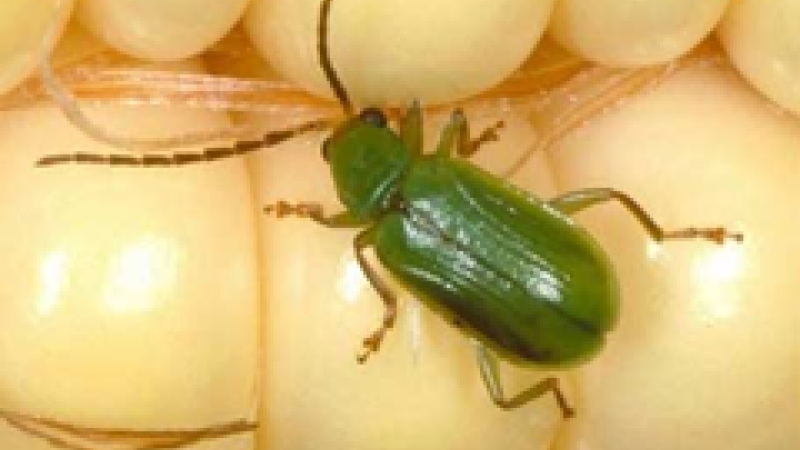Controlling Volunteer Corn This Planting Season
Volunteer corn with herbicide resistance traits can be difficult to control after a strong wind or hail event causes ears to drop on the ground. Some areas can till these fields after fall harvest and irrigate to promote corn germination during the fall. This may not be an option for your management system due to either late harvests or your climate is too cold. There is still corn on the soil surface and the upcoming planting season is rapidly approaching - don’t panic. There are still ways to control volunteer corn in the upcoming planting season. If you still have corn on the soil surface this spring, try to avoid tillage, as this could promote germination of the volunteer corn.

The best chemical control option for volunteer corn in soybeans are grass herbicides. Grass herbicides are the ones with group 1 on the label. This group of herbicides usually need an adjuvant to help increase foliar uptake of the herbicide. Always consult the herbicide label for approved adjuvants. In hot and dry application conditions some speckling can be observed on soybean leaves due to the adjuvant burning the leaf and is not actually due to herbicide injury. A couple examples of commonly used grass herbicides on soybeans include both Select Max (clethodim) and DuPont Assure II (quizalofop). Before deciding which herbicide to spray, double check compatibility with your current soybean herbicide program.
Going forward, farmers will have a new tool to help control volunteer corn in corn. The Enlist Corn trait comes with tolerance to 2,4-D choline, glyphosate, and FOP herbicides (such as DuPont Assure II herbicide). Assure II, normally kills corn, but it can be used in Enlist Corn to control non-Enlist volunteer corn. In the future Hoegemeyer will offer an increasing selection of Enlist Corn product options, stacked with key insect and herbicide tolerant traits.
- It is encouraged to apply Enlist One and Assure II separately because of antagonism causing reduced control on grasses
- If a split application is not possible, apply Enlist One and a higher rate of Assure II with an approved adjuvant (Assure II rate is 5-12 oz/acre and Enlist One application rate is 1.5-2.0 pints/acre)
- Use an approved adjuvant when tank mixing according to www.EnlistTankMix.com and the Assure II label
- Assure II has an application timing window of V2-V6 in Enlist corn
- Enlist One application timing for corn is before V8
- Always double check Enlist One and Assure II labels for application timings and susceptible crops before application
Note: Always consult Enlist One label for proper application timings, instructions and nozzle selection.
If you don’t have Enlist corn and still want to control volunteer corn this upcoming season, you can use Select Max to control any emerged volunteer corn before planting. Select Max has a label for situations like this where it is applied at a rate of 6oz/ac and a minimum of 6 days is required before planting/replanting corn. Do not utilize Assure II in this manner since the plant back restrictions for corn without the Enlist trait is 120 days. For any questions about how to handle volunteer corn for this season corn or soybean crop contact your regional Hoegemeyer agronomist or DSM.

